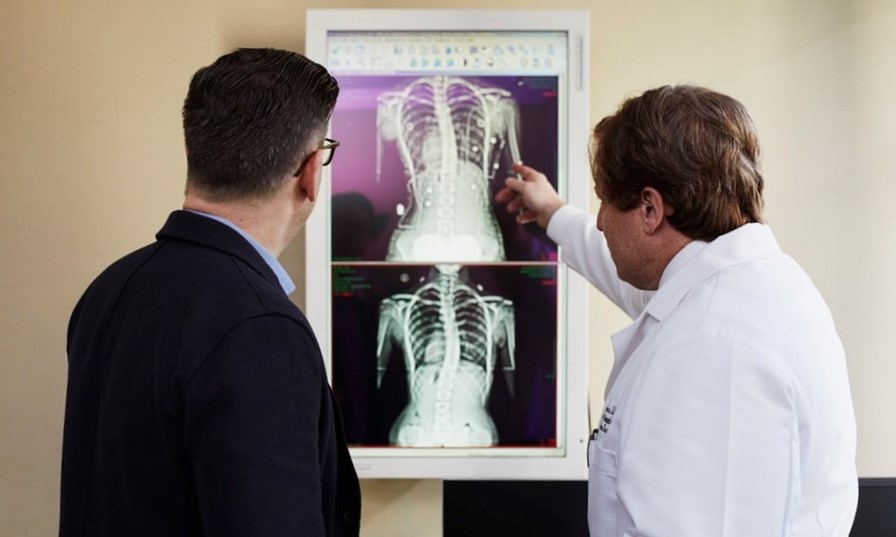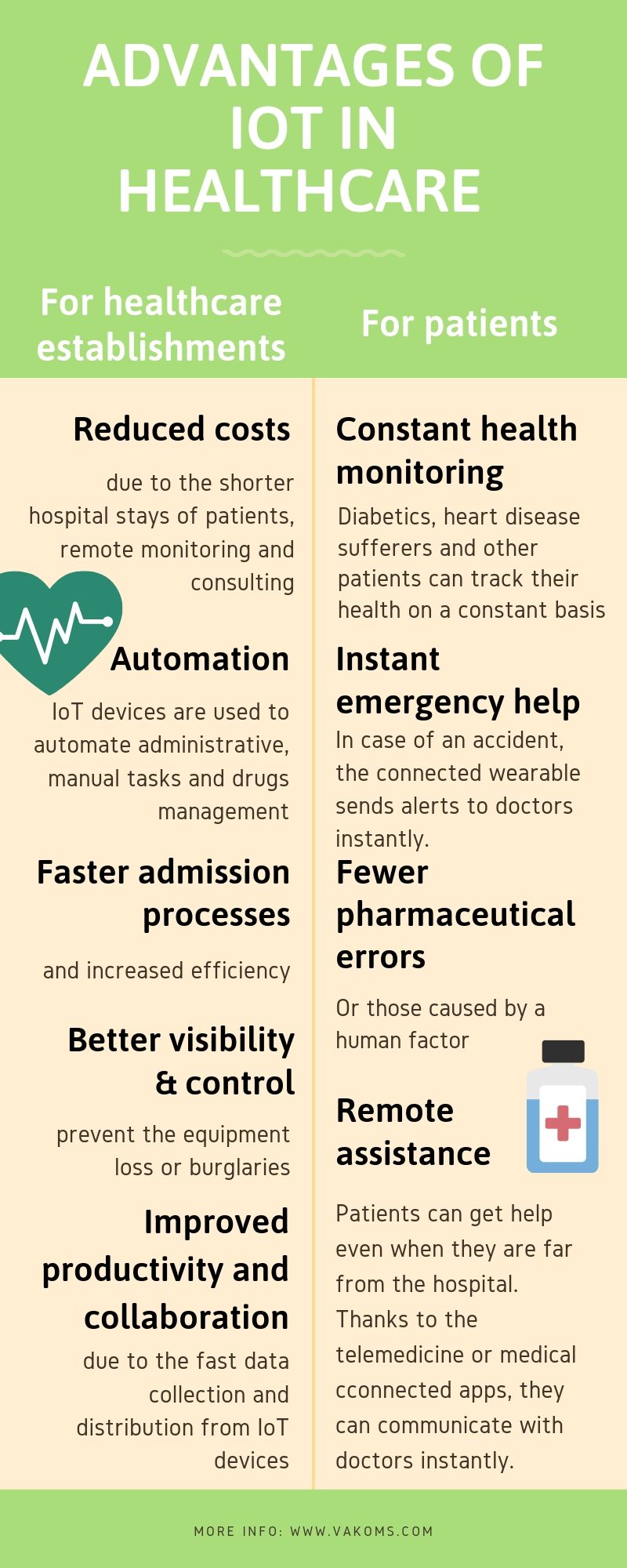How can Health Care benefit from IoT? [+Infographics]

Any mistake or inefficiency might be critical in healthcare. To minimize the human factor and improve patient care, the Internet of Things turned out a revolutionary technology. By 2019, 87% of healthcare organizations had already adopted IoT technologies in some way. Doctors and institutions, patients and pharma specialists use smart medical devices on a daily basis.
This, in turn, opens up immense opportunities for IoMT startups and device manufacturers. In this article, we will explore the key applications of IoT in healthcare and learn some great examples of IoT devices that exist today.
Internet of things in healthcare – how to use and why?
1. Patients health monitoring
Thus, doctors don’t have to visit each patient personally to check their medical device indicators.
Instead, they can see all the unified data from the connected devices via a single device or screen. Besides saving doctor’s time, the IoT devices simplify patients’ surveillance and prevent accidents. If any of health indicators deviates from the norm, doctors can see it immediately and take the necessary measures.
Use cases: a web platform connected to bedside monitoring devices and hospital network, IoT system for preventing pressure injury, connected insulin and glucose monitoring devices for diabetics.
2. Wearables for the end-users
Connected IoT devices are one-of-a-kind solution for diabetics, chronic disease sufferers or anyone who requires constant health monitoring.
No need to go to the clinics for regular testing anymore. A healthcare wearable can simply track the patient’s disease symptoms and send them to the doctor’s device instantly. Additionally, users become more engaged and informed about their health status.
Use cases: smart glucose monitoring systems, connected insulin pumps, wireless blood pressure monitors, heart monitors, CYCORE system for cancer sufferers, connected contact lenses and implantable devices.
3. Drugs management
According to the World Health Organisation study, between 11% and 26% of patients take their medicine inaccurately. Thankfully, smart healthcare solutions could solve this problem.
In fact, pharma agencies already use healthtech devices to control their drugs distribution, dosage adjustment and manage other critical data. IoT-enabled pillboxes would track the time when the patient takes medicine and send the auto-generated reminders to the mobile app if necessary. For hospitals and pharmacies, this allows to significantly reduce the number of errors & accidents.
Use cases: Internet-connected pillboxes, pills with ingestible IoT sensors, drugs delivery robots, drug monitoring systems connected to EHR systems, RFID tagging systems for medicine tracking.
What are the other examples of healthcare IoT technology?
Staff & equipment monitoring
Smart medical devices are often used to monitor the cleanliness of each employee, their location and ID. That way, hospitals can improve the productivity of service and cut the amount of infections caused by poor hygiene.
Clinics also use IoT technology to prevent equipment loss or robbery. The IoT sensors allow to track the real-time location of a specific device and send this data to the central hub or monitoring center. Thus, wheelchairs, pumps and other medical devices can barely be stolen.
Emergency health care
As a patient is on the way to clinics, medical IoT sensors and devices inside the ambulance can send the patient’s key data to hospitals. As a result, staff can prepare to the patient’s arrival in advance and provide more efficient rescue services.
Key benefits of IoT in healthcare
IoT systems simplify workflows, automate routine tasks and actually help to save lives. Even during surgeries, doctors already use IoT devices to perform some human-guided tasks and save high-quality images. You can find more benefits of the Internet of Things devices down below.

Summary
From all of the above, we conclude that there are numerous applications and advantages of IoT in medicine. However, if you’re planning to implement your idea, make sure to avoid these typical mistakes when looking for an IoT app development company. This way, you can create an IoT device that is secure and in-demand among users.






